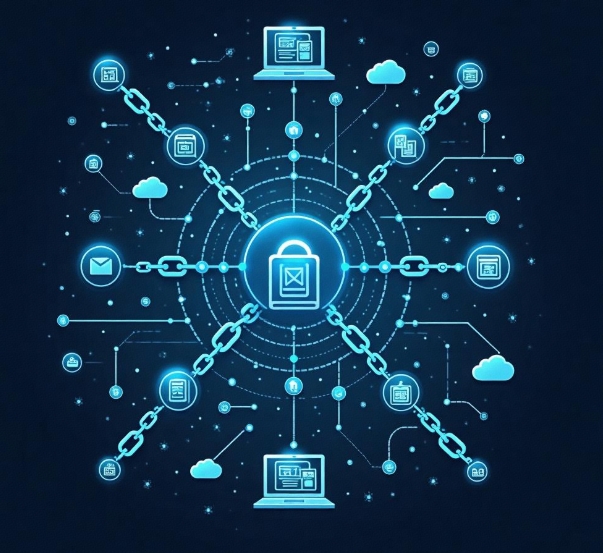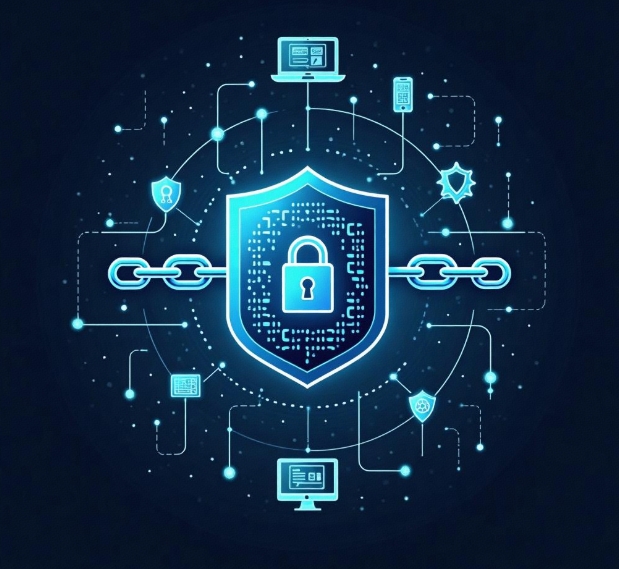Internet of Things and Blockchain Integration: Ensuring Data Security and Transparency
- latest articles
- 1.DApp Development & Customization: Merging Diverse Market Needs with User Experience 2.Analysis of the Core Technical System in DApp Project Development 3.How to achieve cross-chain interoperability in Web3 projects? 4.How does the tokenization of points reconstruct the e-commerce ecosystem? 5.How to Set and Track Data Metrics for a Points Mall? 6.What is DApp Development? Core Concepts and Technical Analysis 7.Inventory of commonly used Web3 development tools and usage tips 8.Development of a Distribution System Integrated with Social E-commerce 9.Six Key Steps for Businesses to Build a Points Mall System 10.What is DApp Development? A Comprehensive Guide from Concept to Implementation
- Popular Articles
- 1.Future Trends and Technology Predictions for APP Development in 2025 2.Analysis of the DeFi Ecosystem: How Developers Can Participate in Decentralized Finance Innovation 3.From Zero to One: How PI Mall Revolutionizes the Traditional E-commerce Model 4.DAPP Development | Best Practices for Professional Customization and Rapid Launch 5.How to Develop a Successful Douyin Mini Program: Technical Architecture and Best Practices 6.Recommended by the Web3 developer community: the most noteworthy forums and resources 7.From Cloud Computing to Computing Power Leasing: Building a Flexible and Scalable Computing Resource Platform 8.Shared Bike System APP: The Convenient Choice in the Era of Smart Travel 9.How to Create a Successful Dating App: From Needs Analysis to User Experience Design 10.From Design to Development: The Complete Process of Bringing an APP Idea to Life
With the continuous advancement of technology, the Internet of Things (IoT) and blockchain technology are increasingly being applied across various industries. IoT connects various physical objects to the internet through sensors and devices, enabling data collection and exchange, while blockchain, as a decentralized distributed ledger technology, offers characteristics of immutability, transparency, and security. When these two technologies are combined, they can effectively address challenges in IoT related to data transmission, storage, and security, ensuring data safety and transparency, and bringing more opportunities and challenges to various sectors.
IoT: An Interconnected World
The Internet of Things connects various devices, sensors, controllers, and more in the physical world to the network via the internet, enabling data exchange and remote control. The core of IoT lies in data collection and transmission, allowing real-time capture of device status, environmental information, and user needs, and transmitting this data to the cloud for analysis and processing. Through this information, users can perform real-time monitoring, remote control, and even predict future trends. IoT application scenarios cover almost every industry, including smart homes, smart cities, smart manufacturing, and healthcare.
However, with the rapid increase in the number of IoT devices, the security risks they face have become more severe. IoT devices are typically connected to extensive networks, and many of these devices are embedded systems lacking robust security mechanisms. If these devices are hacked, it could lead to data breaches, device control by unauthorized parties, and even endanger personal or production safety. Data security and privacy have become two major challenges for IoT.
Blockchain: Ensuring Data Security and Transparency
Blockchain technology was initially applied in transactions involving cryptocurrencies like Bitcoin, but as the technology has evolved, it has gradually been adopted in more fields. The fundamental characteristics of blockchain are decentralization, transparency, immutability, and security. Through a distributed ledger, blockchain ensures that all transaction records are immutable, and each transaction can be traced, guaranteeing data transparency and credibility.
In the structure of blockchain, each block contains a timestamp and a set of transaction records. Once the content of a block is verified, it is linked to the previous block, forming a chain. Since each block is tightly connected to the previous one, any modification to a block's content would affect subsequent blocks in the chain, making tampering evident and significantly enhancing data security.
Blockchain technology eliminates the single point of failure issue in traditional centralized systems through decentralization. Traditional centralized systems often rely on a central server or database to store data; if the server is attacked or fails, the entire system may collapse. In contrast, blockchain distributes data storage across multiple nodes in a decentralized manner, ensuring that the failure of any single node does not impact the entire system, greatly improving reliability and security.
The Integration of IoT and Blockchain: Solving Data Security and Transparency Issues
The rapid development of IoT technology has brought numerous devices and systems online, generating vast amounts of data. Protecting this data from tampering, leakage, and misuse has become an urgent issue. Blockchain technology, with its decentralized and immutable nature, can effectively address the security and transparency challenges faced by IoT when integrated with it.
1. Ensuring Data Immutability
When IoT devices collect data, they often generate large volumes of transmission and storage data. Since this data often involves user privacy or sensitive information, any tampering or loss could result in significant damage. The immutability feature of blockchain ensures that once data is recorded on the blockchain, it cannot be altered or deleted. By uploading data generated by IoT devices to the blockchain network, any tampering attempts can be immediately detected, thereby enhancing data security.
For example, in smart healthcare, IoT devices monitor patients' health conditions in real-time via sensors. If this data is tampered with or forged, it could mislead doctors' diagnoses and affect patient treatment outcomes. Blockchain technology can ensure the authenticity and integrity of this medical data, preventing malicious tampering and thereby improving the accuracy and reliability of medical decisions.
2. Data Transparency and Traceability
Data generated by IoT devices is typically transmitted to the cloud for analysis and processing, but the source, processing, and storage methods of this data are often opaque, making it difficult for users and relevant parties to trace the data's origin and change history. The transparency and traceability features of blockchain can compensate for this deficiency. By recording the generation, transmission, and processing of each piece of data on the blockchain, all data changes can be publicly queried and verified, ensuring data transparency and traceability.
For instance, in supply chain management, IoT devices can monitor the transportation process of goods in real-time, and blockchain can record each piece of transportation data (such as temperature, humidity, location, etc.) on the chain, ensuring that goods are not damaged or contaminated during transit. Consumers can trace the origin and transportation process of goods via the blockchain, thereby enhancing trust in the products.
3. Safeguarding Data Privacy
In IoT environments, user personal information, device usage records, and other data may involve privacy issues. Traditional centralized data storage methods are vulnerable to hacker attacks, and once data is leaked, it could lead to serious consequences. Blockchain technology can effectively protect data privacy through encryption and distributed storage. By using public-private key encryption, only authorized users can access specific data, ensuring the security of user privacy.
Additionally, with the integration of IoT and blockchain, smart contracts can be implemented on the blockchain. Smart contracts can automatically execute based on predefined rules and ensure fairness and transparency in the execution process. Thus, IoT devices can interact with the blockchain according to the rules of smart contracts, ensuring that each data transmission follows predefined privacy protection measures.
Application Scenarios of IoT and Blockchain Integration
Smart Homes
In smart homes, various devices (such as smart locks, lighting, temperature control systems, etc.) are interconnected through IoT technology. The data generated by these devices involves user privacy and security, such as family members' entry and exit records, indoor temperature and humidity, etc. If this data is tampered with or leaked, it could pose security risks. Blockchain technology can ensure the immutability and transparency of this data through decentralization, protecting user privacy and enhancing the security of smart homes.
Smart Cities
Smart cities rely on a large number of sensors and devices to achieve automation and intelligence in urban management. Areas such as traffic management, environmental monitoring, and energy management involve vast amounts of IoT data. By recording this data on the blockchain, transparency, traceability, and security can be achieved, preventing data tampering or misuse, and thereby improving the management efficiency and transparency of smart cities.
Smart Manufacturing
In the field of smart manufacturing, IoT technology can monitor the operational status of production lines in real-time and generate large amounts of production data. Blockchain technology can ensure the authenticity and integrity of this production data, providing reliable data support for production decisions. At the same time, blockchain can also optimize supply chain management by enabling transparent data flow, enhancing the efficiency and trustworthiness of the supply chain.
Continuous Innovation and Challenges
Although the integration of IoT and blockchain holds great potential, it still faces some challenges in practical applications. For example, issues such as blockchain scalability, legal and compliance aspects of data privacy protection, and standardization of IoT devices need further resolution. As technology continues to advance, the integration of IoT and blockchain will deepen, bringing greater value to various industries.
Conclusion
The integration of IoT and blockchain provides an effective solution for ensuring data security and transparency. Through the immutable, transparent, and secure characteristics of blockchain, the credibility and privacy of data generated by IoT can be effectively safeguarded, promoting digital transformation across industries. However, achieving this goal still requires overcoming challenges in technology, law, and other areas, and driving continuous innovation and improvement of the technology. As these technologies mature and become more widespread, IoT and blockchain will together build a safer and more transparent digital world.
-

How to Use IoT Development to Enhance Supply Chain Efficiency
With the rapid development of the global economy and the deepening of digital tr···
-

Development and Innovation of the Internet of Things in the Healthcare Sector
With the rapid advancement of information technology, the Internet of Things (Io···
-

Data Storage and Analysis Methods in IoT Development
The Internet of Things (IoT) is one of the most revolutionary innovations in tod···

 Blockchain
Blockchain












